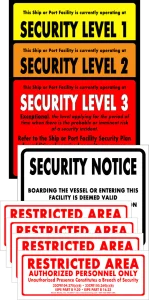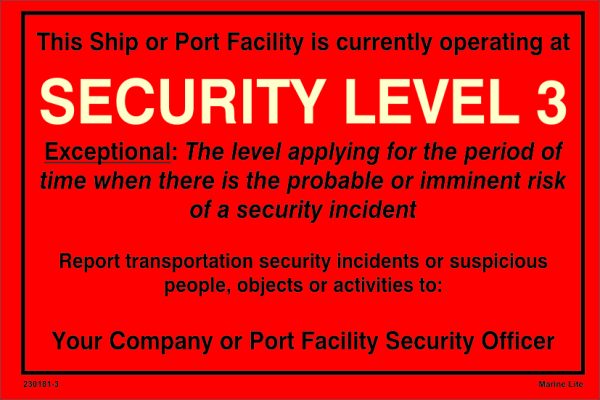 How Safe Are Our Ports and Ships in an Unpredictable World?
How Safe Are Our Ports and Ships in an Unpredictable World?
ISPS Code Explained: International Ship and Port Facility Security for Maritime Safety and Compliance
Learn what the ISPS Code is, why it’s vital for maritime security, and how ships and ports comply. A must-read guide for maritime students, professionals, and port authorities.
After the tragic events of 9/11, global awareness of terrorism surged—especially regarding critical infrastructures like ports and ships. In response, the International Maritime Organization (IMO) introduced a comprehensive framework: the ISPS Code.
Whether you’re a seafarer, student, port manager, or maritime authority, understanding the International Ship and Port Facility Security (ISPS) Code is essential to protecting lives, cargo, and global trade.
What Is the ISPS Code?
The ISPS Code, short for International Ship and Port Facility Security Code, is a set of measures and protocols designed to enhance the security of ships and port facilities. It is part of SOLAS Chapter XI-2 and was adopted by the IMO in 2002, coming into force in July 2004.
Key Objectives:
-
Detect and assess security threats
-
Establish preventive and responsive procedures
-
Provide a framework for cooperation between governments and maritime stakeholders
-
Ensure maritime personnel are trained and equipped to handle security risks
Who Must Comply With the ISPS Code?
-
Ships > 500 GT on international voyages
-
Passenger ships, including high-speed crafts
-
Mobile offshore drilling units (MODUs)
-
Port facilities serving the above vessels
Core Components of the ISPS Code
🚢 1. Ship Security
-
Ship Security Plan (SSP): Custom security protocols for each vessel
-
Ship Security Officer (SSO): Responsible for onboard implementation
-
Security Levels: Defined in three tiers—Level 1 (Normal), Level 2 (Heightened), and Level 3 (Exceptional Threat)
-
Access Control: Procedures for crew, visitors, and cargo screening
-
Continuous Synopsis Record (CSR): Track vessel identity and ownership
⚓ 2. Port Facility Security
-
Port Facility Security Plan (PFSP): Procedures for managing threats and emergencies
-
Port Facility Security Officer (PFSO): Oversees plan execution and staff training
-
Restricted Areas & Surveillance: CCTV, barriers, and controlled zones
-
Drills and Exercises: Mandatory testing of security measures
Applications & Real-World Use Cases
-
Container Terminal Access Control: Biometric verification and CCTV monitoring of all personnel entering restricted zones
-
Cruise Terminal Security: Screening baggage, checking passenger IDs, and monitoring crowd movements during embarkation
-
Naval Base Protection: Integrating ISPS standards with national defense security protocols
-
Incident Response: In 2018, a major port in Asia detected an intruder using ISPS surveillance systems—averting a potential smuggling operation
Importance for Maritime Professionals and Students
Understanding the ISPS Code is critical for:
-
Seafarers: To respond to emergencies and conduct watchkeeping at security-sensitive times
-
Port Operators: To enforce screening and access procedures
-
Logistics & Shipping Managers: To ensure documentation and compliance during vessel turnaround
-
Students & Researchers: To explore maritime law, international cooperation, and risk management
🛡️ “Security is not a choice in maritime operations—it’s a shared obligation.” – IMO Maritime Security Briefing
Latest Trends & Future Outlook
🔍 Key Developments in Maritime Security:
-
Cybersecurity in ISPS: Protecting ship and port systems from digital intrusions
-
Smart Surveillance Systems: AI-driven threat detection and facial recognition
-
Integration with ISM Code: Aligning safety and security through joint audits
-
Expanded Use of Drones: For perimeter monitoring and emergency response
-
Remote Access Controls: Biometric and app-based access to ship areas
FAQs (From Google’s “People Also Ask”)
Q: What is the ISPS Code in shipping?
A: It’s an IMO regulation that provides a standardized security framework for ships and port facilities to detect and prevent threats.
Q: What is the difference between ISM and ISPS?
A: ISM deals with safety (International Safety Management), while ISPS focuses on security against unlawful acts.
Q: Who issues the ISPS certificate?
A: Recognized Organizations (e.g., classification societies) issue it after verifying compliance with SSP and ISPS audit requirements.
Q: Is ISPS compliance mandatory?
A: Yes, under SOLAS Chapter XI-2. Non-compliance can lead to detention, denial of port entry, or sanctions.
Statistics & Impact
-
Over 150 contracting governments enforce ISPS Code standards
-
Compliance helps prevent cargo theft, smuggling, piracy, and terrorism
-
Global port security spending is expected to exceed $10 billion by 2030
-
Security drills must be conducted at least once every three months onboard
Conclusion: Maritime Security Is a Shared Duty
In a world of increasing maritime threats, the ISPS Code provides a vital shield for global shipping. From the smallest crew member to the largest port facility, everyone plays a role. For professionals and students alike, knowing the ISPS Code isn’t just about compliance—it’s about commitment to safety, stability, and global security.
👉 Further Reading & Resources:
- IMO ISPS Code Overview
- Port Security Handbook – IAPH
- SOLAS Chapter XI-2 Full Text (IMO)
- BIMCO – Maritime Security Reports
Maritime Security Concerns: Safeguarding the Seas in an Era of Global Threats


Great work! This is the type of information that are supposed to be shared across the web. Shame on Google for no longer positioning this post higher! Come on over and seek advice from my site . Thanks =)
Hi, Neat post. There’s an issue together with your site in internet explorer, could test this? IE still is the market leader and a large section of other folks will miss your great writing due to this problem. http://www.kayswell.com
You made some decent points there. I looked on the internet for the issue and found most persons will consent with your website.